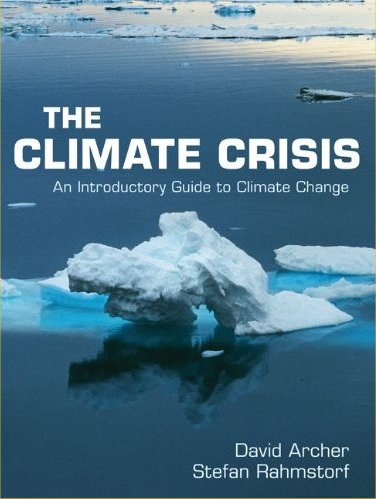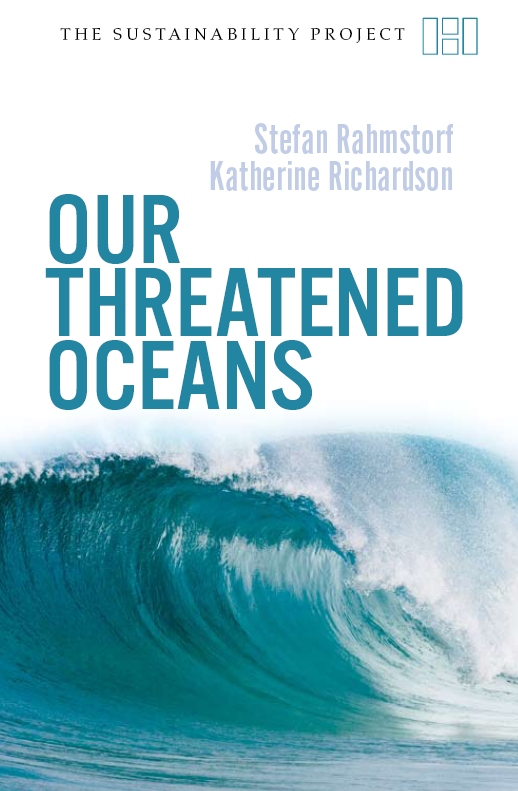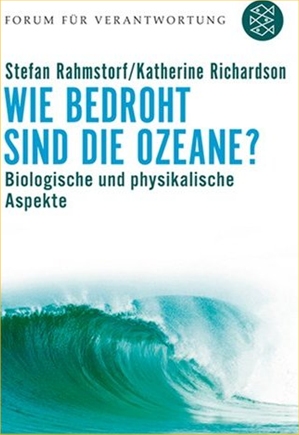May 2001 Report for the Project
Study of the Atlantic thermohaline circulation in a highly efficient global ocean-atmosphere model
Principal Investigators: S. Rahmstorf and A. Ganopolski 1 Introduction: Objectives and outline of the research The specific objectives of the project are as follows.
Postdoctoral Researcher: M. A. Morales Maqueda
Potsdam Institute for Climate Impact Research, PO Box 601203, 14412
Potsdam
As expounded in the project proposal and in our June 2000 report,
the thrust of this piece of research is the clarification of the
role played by the oceanic overturning circulation in shaping the
global climate and its variability on multi-year to millennial time
scales. Our workhorse for this study is the coupled atmosphere-ocean-sea
ice model CLIMBER 3, whose preliminary alpha version is already
operational.
- To complete the development phase of the CLIMBER
3.
 model.
model. - To study the large-scale modes of circulation of the modern
ocean with the aim of helping elucidating the stability of the
overturning circulation, the mechanisms whereby it is sustained,
and its impact on today's global climate.
Previous modelling work on this subject has been carried out with either computationally inexpensive, but extremely simplistic, representations of the atmospheric dynamics and thermodynamics or with highly elaborate, and hence very slow, atmosphere models (cf. references in Rahmstorf and Ganopolski, 1999). In contrast, the atmosphere module of CLIMBER 3. provides an excellent compromise between physical realism and
computational efficiency. It has succeeded in simulating most
large-scale mean climatic fields with an accuracy similar to that
of Atmospheric General Circulation Models (AGCMs), while its computing
requirement is 100 to 1000 times lower. Seasonal-equilibrium integrations
with the coupled model and with the ocen-sea ice component alone
are about to be started. Once the experiments are completed, the
modelled present-day ocean circulation, temperature and salinity
distribution, and sea-ice fields will be compared against existing
data sets both for validation/tuning purposes and in order to
further tune the model components.
provides an excellent compromise between physical realism and
computational efficiency. It has succeeded in simulating most
large-scale mean climatic fields with an accuracy similar to that
of Atmospheric General Circulation Models (AGCMs), while its computing
requirement is 100 to 1000 times lower. Seasonal-equilibrium integrations
with the coupled model and with the ocen-sea ice component alone
are about to be started. Once the experiments are completed, the
modelled present-day ocean circulation, temperature and salinity
distribution, and sea-ice fields will be compared against existing
data sets both for validation/tuning purposes and in order to
further tune the model components. - To analyse the different equilibrium states of the system and
their stability.
The sensitivity of the meridional overturning to the boundary conditions at the air-ocean interface has been the subject of various studies (Bryan, 1986; Döscher et al., 1994; Rahmstorf and Willebrand, 1995). Simulations with stand-alone ocean models using diverse parameterisations of the surface boundary conditions for freshwater, heat, and wind stress are limited in that they can but poorly mimic, if at all, the interactions between atmosphere, ocean, and sea ice, notably in regard to the reaction of the atmosphere to large changes in ocean circulation. This shortcoming is not present in coupled climate models, which have, at least in principle, the potential to account for all relevant feedbacks, and whose only boundary conditions are the physical ones applied at the top of the atmosphere, namely heat input from the Sun and heat release from the Earth. - To investigate the "natural" variability of the model and its relation to the observed climate variability. The model CLIMBER 2, forerunner of CLIMBER 3.
While the atmospheric component of the model (POTSDAM; Petoukhov et al., 2000, Ganopolski et al., 2000a) has been in service for a number of years, the ocean (MOM3) and sea-ice (ISIS) modules have undergone significant and indispensable modifications in the course of the last year and a half (see June 2000 report and below). In addition, an efficient and physically-based coupler has been constructed as a necessary interface between the model components. The coupled model has now reached its fine-tuning stage.
A description of the configuration of the ocean-sea ice model MOM3/ISIS can be found in the past June 2000 report for this project (Rahmstorf et al., 2000). At the time, uncoupled integrations with three different resolutions (5
2.1 Further development of MOM3
The Geophysical Fluid Dynamics Laboratory (GFDL) released MOM3 into
the public domain last year. However, the model was still in the
prototype phase and aspects of its numerics and physics presented
a number of serious problems that either were the direct cause or
contributed to the difficulties encountered in our simulations.
Consequently, parts of the MOM3 algorithmics had to be revised.
Here we shall give only a summary of the most important modifications
we have introduced.
- Nonlinear free-surface scheme. The nonlinear free-surface formulation of MOM contains a conspicuous checkerboard null mode that is inherently associated to the B-grid on which the model equations are cast. Since variations in the free surface control the changes in volume of the top grid cell of the model, this mode can impact on other fields, thus distorting crucial processes such as the local ocean circulation and convective activity, or the formation of sea ice. To put a remedy to this problem, we have tested several filtering techniques, such as Fourier, Laplacian, and Shapiro filters, all of which smooth out the checkerboard mode, but have a tendency to introduce noise in the surface vertical component of the velocity. We have found, however, that an upstream correction to the continuity equation for the free surface elevation is the most efficient and least disruptive procedure for filtering the mode. We are in the process of documenting this procedure, which we have adopted, and expect that it will be introduced in future MOM releases.
Another, and more serious problem arising from the use of a nonlinear free-surface scheme relates to the lack of tracer-conservation that comes about when, in order to save computing time, tracer and current equations are integrated with unequal time steps. Long-term integrations with MOM are very resource consuming. A technique to circumvent this difficulty is the stretching of tracer time steps relative to ocean-dynamics time steps, which accelerates the integration by up to a factor of 10. The price to pay is a distortion of the ocean dynamics and transport processes. But integrations incorporating seasonal variability have shown that many important properties of the world ocean can be reasonably represented with this approach. However, in a nonlinear free surface scheme the effects of the undulating surface height are incorporated not only into the ocean dynamics but also into the tracer equations, which now explicitly take into account the presence of fresh water forcing. Thus, the model is fully conservative only if tracers and surface height are integrated synchronously, which would lead to an prohibitively expensive integration if tracers had to be advected-diffused with time steps appropriate for the free surface (seconds to minutes). We have developed an algorithm that guarantees volume and tracer conservation but still allows for stretched tracer time steps using a nonlinear free surface. The corner-stone of the technique is the splitting of the barotropic current and free surface time steps in such a way that barotropic currents run synchronously with the rest of the ocean dynamics while the free surface evolves with the tracer time step. The algorithm has been implemented in MOM3. As ilustrated in Fig. 1, results from two seasonal-cycle simulations, one employing synchronous dynamics and tracers, the other using the new technique, reveal that most ocean large-scale features, including depth and strength of the overturning, and tracer distributions, can be realistically simulated with the method (Griesel and Morales Maqueda, 2001).

Figure: Upper panel: amplitude of the seasonal cycle (winter-minus-summer mean) of the barotropic transport (in millions of m
- 2.
- K Profile Parameterisation (KPP) for vertical-mixing. The KPP parameterisation of Large et al. (1994) was implemented in MOM3, but contained programing errors that led to the creation of negative vertical viscosities and diffusivities. These errors have now been removed. The parameterisation leads to a considerable improvement of the oceanic sensible heat flux at the base of the ice, notably at the sea-ice front in Southern Ocean.
- 3.
- Bottom-Boundary Layer (BBL) and near-bottom mixing schemes. The BBL scheme of MOM has been complemented with the improvements recommended by Nakano and Suginohara (2000). Additionally, the method of enhancement of the vertical diffusivity over rough bathymetry of Hasumi and Suginohara (1999) has been tested and adopted in our MOM version.
- 4.
- Isopycnal Gent-McWilliams stirring. We have detected a weak near-surface instability in the model's overturning field that is created by the use of the skew-formulation of the Gent-McWilliams isoneutral mixing scheme (Griffies, 1998). We are in the process of solving this problem in collaboration with the GFDL.
2.2 Further development of ISIS
All the modifications to the thermodynamic-dynamic sea-ice model
ISIS mentioned in Rahmstorf et al. (2000) have been incorporated
in the model. Within the frame of our collaboration with T. Fichefet
and H. Goosse (UCL), one of the authors (MAMM) has introduced in
the model the sea-ice dynamics parameterisation of Zhang and Hibler
(1979), which speeds up model integrations by circa a factor 10.
As part of the testing procedure of ISIS, we have embarked in an
investigation of the possible role that glacial sea-ice expansion
in the Southern Ocean might have played in the lowering of atmospheric
CO ![]() during the Last Glacial Maximum (LGM). This work is certainly not
without links with the overall subject of this project, and it can
be summarised as follows (for details, see Morales Maqueda and Rahmstorf,
2001).
during the Last Glacial Maximum (LGM). This work is certainly not
without links with the overall subject of this project, and it can
be summarised as follows (for details, see Morales Maqueda and Rahmstorf,
2001).
Recently, Stephens and Keeling (2000) have put forward an appealing
theory for explaining the decrease in glacial atmospheric CO ![]() inferred from ice-core records. They argue that a compact sea-ice
cover extending southward of
inferred from ice-core records. They argue that a compact sea-ice
cover extending southward of ![]() 55
55 ![]() S would have trapped large amounts of CO
S would have trapped large amounts of CO ![]() beneath the sea surface, thus accounting for the lower atmospheric
concentrations. An atmosphere-ocean box model in which sea-ice area
is prescribed allows them to simulate
beneath the sea surface, thus accounting for the lower atmospheric
concentrations. An atmosphere-ocean box model in which sea-ice area
is prescribed allows them to simulate ![]() 80% of the CO
80% of the CO ![]() drawdown. However, glacial CO
drawdown. However, glacial CO ![]() levels can be attained in their model only when the fraction of
ice-covered area southward of the Antarctic Polar Front (APF) rises
to 99-100%. To assess whether the existence of such a compact ice
cover is feasible in a LGM environment, we have carried out several
integrations of the annual cycle of the sea-ice cover in the Southern
Hemisphere under boundary conditions representative of today's and
LGM's climates. To this end, we have employed ISIS coupled to the
mixed-layer model described in Fichefet and Morales Maqueda (1997).
Our best guess LGM scenario indicates that the ice-area fraction
southward the APF was probably well below
levels can be attained in their model only when the fraction of
ice-covered area southward of the Antarctic Polar Front (APF) rises
to 99-100%. To assess whether the existence of such a compact ice
cover is feasible in a LGM environment, we have carried out several
integrations of the annual cycle of the sea-ice cover in the Southern
Hemisphere under boundary conditions representative of today's and
LGM's climates. To this end, we have employed ISIS coupled to the
mixed-layer model described in Fichefet and Morales Maqueda (1997).
Our best guess LGM scenario indicates that the ice-area fraction
southward the APF was probably well below ![]() 92% at the time (Fig. 2), the persistence of relatively large amounts
of open water (leads) within the ice pack stemming from the alliance
of three dynamical effects that tend to counter lead closure: shearing
deformation and ice divergence, which promote lead opening, and
wind-induced variations in the collection thickness of new ice,
which decelerates lead closure. These simulations show as well that
the Southern Ocean mixed layer might have been up to
92% at the time (Fig. 2), the persistence of relatively large amounts
of open water (leads) within the ice pack stemming from the alliance
of three dynamical effects that tend to counter lead closure: shearing
deformation and ice divergence, which promote lead opening, and
wind-induced variations in the collection thickness of new ice,
which decelerates lead closure. These simulations show as well that
the Southern Ocean mixed layer might have been up to ![]() 90 m deeper during the LGM. If this was the case, the stronger oceanic
vertical mixing would have presumably supplied additional deep-ocean
CO
90 m deeper during the LGM. If this was the case, the stronger oceanic
vertical mixing would have presumably supplied additional deep-ocean
CO ![]() to the surface, thus partly compensating for the increase in ice-area
fractions. By inserting our simulated ice-coverage values into the
ice area-versus-CO
to the surface, thus partly compensating for the increase in ice-area
fractions. By inserting our simulated ice-coverage values into the
ice area-versus-CO ![]() concentration curve of Stephens and Keeling (2000), we estimate
that entrapment of CO
concentration curve of Stephens and Keeling (2000), we estimate
that entrapment of CO ![]() by sea ice could account for not more than 15-50% of the glacial
CO
by sea ice could account for not more than 15-50% of the glacial
CO ![]() decrease. Although it is implausible that Antarctic sea-ice expansion
alone can fully explain the atmospheric CO
decrease. Although it is implausible that Antarctic sea-ice expansion
alone can fully explain the atmospheric CO ![]() depletion during the LGM, our results do not discard however sea
ice as a potentially important control.
depletion during the LGM, our results do not discard however sea
ice as a potentially important control.

Figure: Wintertime sea-ice concentrations in the Southern
Ocean from (a) SMMR observations, (b) a present day climate simulation,
and (c) an LGM scenario where air temperatures were 10 ![]() C colder than today and winds 50% stronger. Contour intervals are
0.15 (ice front), 0.90, and 0.95. The pink line delineates the mean
path of the APF.
C colder than today and winds 50% stronger. Contour intervals are
0.15 (ice front), 0.90, and 0.95. The pink line delineates the mean
path of the APF.
2.3 Coupled atmosphere-ocean-sea ice interface
The Coupled Atmosphere-Ocean-Sea ice interface (CAOS) is an
important piece of CLIMBER 3. ![]() , as it controls the exchange of both physical and numerical information
between the model components. The central principle that has guided
the design of this interface is that the coupling must guarantee
strict conservation of energy, momentum, and substances in the system,
provided, of course, that the individual components of the coupled
model are themselves conservative. This goal has been achieved by
adhering to the following three directives:
, as it controls the exchange of both physical and numerical information
between the model components. The central principle that has guided
the design of this interface is that the coupling must guarantee
strict conservation of energy, momentum, and substances in the system,
provided, of course, that the individual components of the coupled
model are themselves conservative. This goal has been achieved by
adhering to the following three directives:
- The atmosphere, ocean and sea ice models must provide only state variables (e.g. air temperature, humidity, and winds, sea-surface temperature, salinities, and currents, and sea-ice surface temperature, thickness, and drift) to the coupler.
- The coupler must compute all fluxes at the boundaries between system components by using pertinent empirical or physically-based parameterisations, and these fluxes are the only information that the coupler is allowed transfer back to the models, after spatial and temporal interpolation if need there be.
- In no case must the coupler transform the values of the models' state variables.
The coupler has for the most part been completed by now, and its
performance is being assessed in a 2000-year integration on the
coarse 5 ![]() 5
5 ![]() -resolution grid.
-resolution grid.
The tool employed to launch and control the integration of the
coupler and the coupled model is the OASIS (Ocean-Atmosphere-Sea
Ice-Soil) software. OASIS is an efficient and easy-to-use set of
Fortran 77, Fortran 90 and C routines whose main tasks are the synchronisation
of the models being coupled. Together with CLIMBER 3. ![]() , OASIS has been installed in the IBM-SP parallel supercomputer
recently arrived in PIK. We are in the process of adapting the coupled
model so that it runs in parallel in this new machine with the aid
of OASIS and using the message passing interface MPI1. With this
aim in mind, we have started a collaboration between our group,
the Data & Computation Department at PIK, and S. Frickenhaus
from the Computer Centre at the Alfred Wegener Institut (Bremerhaven).
, OASIS has been installed in the IBM-SP parallel supercomputer
recently arrived in PIK. We are in the process of adapting the coupled
model so that it runs in parallel in this new machine with the aid
of OASIS and using the message passing interface MPI1. With this
aim in mind, we have started a collaboration between our group,
the Data & Computation Department at PIK, and S. Frickenhaus
from the Computer Centre at the Alfred Wegener Institut (Bremerhaven).
3 Situation of the Project in comparison with the initial objectives
and time schedule
According the plan outlined in the project proposal (Rahmstorf
and Ganopolski, 1999), we should at this stage have completed the
test and model spinup phases of the project and started the analysis
of the present-day climate simulations both with CLIMBER 3. ![]() and with the uncoupled MOM3/ISIS submodel in the 5
and with the uncoupled MOM3/ISIS submodel in the 5 ![]() 5
5 ![]() , 4
, 4 ![]() 4
4 ![]() , and 2
, and 2 ![]() 2
2 ![]() resolutions. Unfortunately, due mainly to the numerous difficulties
we have been facing with MOM3, these tasks have not yet been finalised.
We are optimistic, however, that the integrations will be completed
by the end of Summer 2001, excluding perhaps the fine, 2
resolutions. Unfortunately, due mainly to the numerous difficulties
we have been facing with MOM3, these tasks have not yet been finalised.
We are optimistic, however, that the integrations will be completed
by the end of Summer 2001, excluding perhaps the fine, 2 ![]() 2
2 ![]() -resolution one, which will require further preparation before it
is started, notably regarding the ocean's bathymetry, for which
we shall use a compilation of sills of the global ocean prepared
by S. R. Thompson and B. de Cuevas (see https://www.soc.soton.ac.uk/JRD/OCCAM/sills.html).
-resolution one, which will require further preparation before it
is started, notably regarding the ocean's bathymetry, for which
we shall use a compilation of sills of the global ocean prepared
by S. R. Thompson and B. de Cuevas (see https://www.soc.soton.ac.uk/JRD/OCCAM/sills.html).
Although we have run into a delay of slightly over
half a year with respect to the original plan, we feel that the
high level of expertise and experience gained so far during the
process of tackling the problems posed by the different components
of CLIMBER 3. ![]() will largely pay in the last phase of the project, as familiarity
with the numerics and the parameterisations of the codes will be
instrumental to understanding and analysing model results. PIK has
recently equipped itself with a new computer which is significantly
faster than the one we had available till now.
will largely pay in the last phase of the project, as familiarity
with the numerics and the parameterisations of the codes will be
instrumental to understanding and analysing model results. PIK has
recently equipped itself with a new computer which is significantly
faster than the one we had available till now.
We finally note that the work carried out so far
has generated two scientific publications. The first one deals with
the technical problem of the treatment of the nonlinear free surface
in an ocean general circulation model (Griesel and Morales Maqueda,
2001). It was presented at this year's General Assembly of the European
Geophysical Society, and the manuscript is in the process in being
completed. The second one, which has already been submitted, reports
on our research regarding potential links between Antarctic sea
ice expansion and atmospheric CO References![]() variations (Morales Maqueda and Rahmstorf, 2001).
variations (Morales Maqueda and Rahmstorf, 2001).
- Bryan, K., 1986. High-latitude salinity effects and interhemispheric thermohaline circulations. Nature 323, 301-304.
- Da Silva, A. M., C. C. Young, and S. Levitus, 1994. Atlas of surface marine data 1994. Vol. 1: Algorithms and Procedures. US Dept. of Commerce. NOAA Atlas NESIDS 6, Washington D.C., USA, 83 pp.
- Döscher, R., C. W. Böning, and P. Herrmann, 1994. Response of circulation and heat transport in the North Atlantic to changes in thermohaline forcing in northern latitudes: a model study. J. Phys. Oceanogr. 24, 2306-2320.
- Fichefet, T., and M. A. Morales Maqueda, 1997. Sensitivity of a global sea ice model to the treatment of ice thermodynamics and dynamics. J. Geophys. Res. 102, 12,609-12,646.
- Hasumi, H., and N. Suginohara, 1999. Effects of locally enhanced diffusivity over rough bathymetry on the world ocean circulation. J. Geophys. Res. 104, 23,367-23,374.
- Ganopolski, A., and S. Rahmstorf, 2001. Simulation of rapid glacial climate changes in a coupled climate model. Nature, 409, 153-158.
- Ganopolski, A., V. Petoukhov, S. Rahmstorf, V Brockin, M. Claussen, and C. Kubatzki, 2000a. CLIMBER-2: A climate system model of intermediate complexity. Part II: Model sensitivity. Clim. Dyn., in press
- Ganopolski, A., S. Rahmstorf, V. Petoukhov, and M. Claussen, 2000b. Simulation of modern and glacial climates with a coupled global model of intermediate complexity. Nature, 391, 350-356.
- Goosse, H., and T. Fichefet, 1999. Importance of ice-ocean interactions for the global ocean circulation: A model study. J. Geophys. Res. 104, 23,337-23,355.
- Griesel, A., and M. A. Morales Maqueda, 2001. A volume and tracer conserving method for Asynchronous integrations of dynamics and tracers in an ocean model using a nonlinear free surface. In preparation. To be submitted to Ocean Modelling.
- Levitus, S., 1982. Climatological Atlas of the World Ocean. NOAA Prof. Pap. 13, US Gov. Printing Office, Washington D.C.
- Large, W. C., J. C. McWilliams, and S. C. Doney, 1994. Ocean vertical mixing: A review and a model with a nonlocal boundary layer parameterization. Rev. Geophys. 32, 363-403.
- Morales Maqueda, M. A., and S. Rahmstorf, 2001.
Did Antarctic sea-ice expansion cause glaciol CO
 decay? Submitted to Geophys. Res. Lett.
decay? Submitted to Geophys. Res. Lett. - Nakano, H., and N. Suginohara, 2000. Reproduction of overflow/downslope-flow in a world ocean model by incorporating bottom boundary layer. Submitted to Journal of Physical Oceanography.
- Petoukhov, V., A. Ganopolski, M. Claussen, A. Eliseev, C. Kubatzki, and S. Rahmstorf, 2000. CLIMBER-2: A climate system model of intermediate complexity. Part I: Model description and performance for present climate. Clim. Dyn., 16, 1-17.
- Rahmstorf, S., and A. Ganopolski, 1999. CLIVAR Antrag. Untersuchung der thermohalinen Atlantikzirkulation in einem hocheffizienten globalen Ozean-Atmosphären-Modell.
- Rahmstorf, S., J. Willebrand, 1995. The role of temperature feedback in stabilizing the thermohaline circulation. J. Phys. Oceanogr. 25, 787-805.
- Rahmstorf, S., A. Ganopolski, and M. A. Morales Maqueda, 2000. June 2000 Report for the Project "Study of the Atlantic thermohaline circulation in a highly efficient global ocean-atmosphere model".
- Stephens, B. B., and R. F. Keeling, 2000. The
influence of Antarctic sea ice on glacial-interglacial CO
 variations, Nature, 404, 171-174.
variations, Nature, 404, 171-174. - Zhang, J., and W. D. Hibler III, 1997. On an efficient numerical method for modeling sea ice dynamics. J. Geophys. Res. 102, 8691-8702.
Thu May 17 11:50:17 NFT 2001













